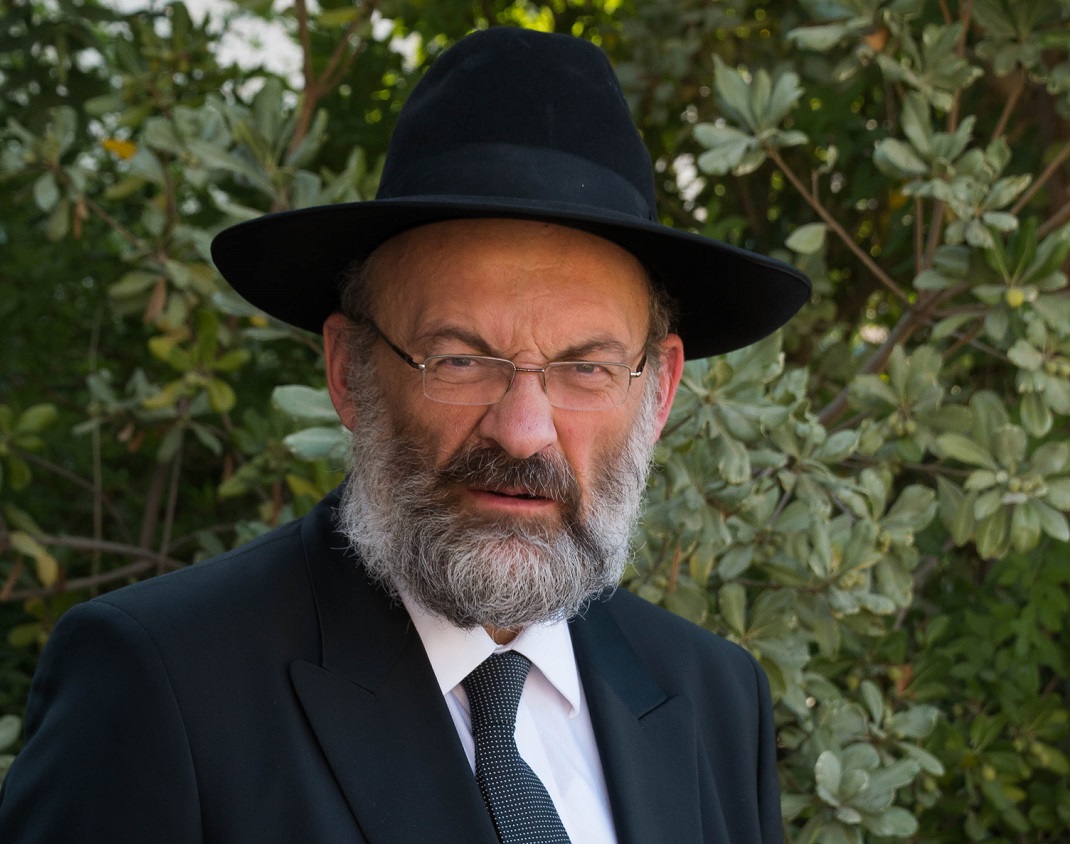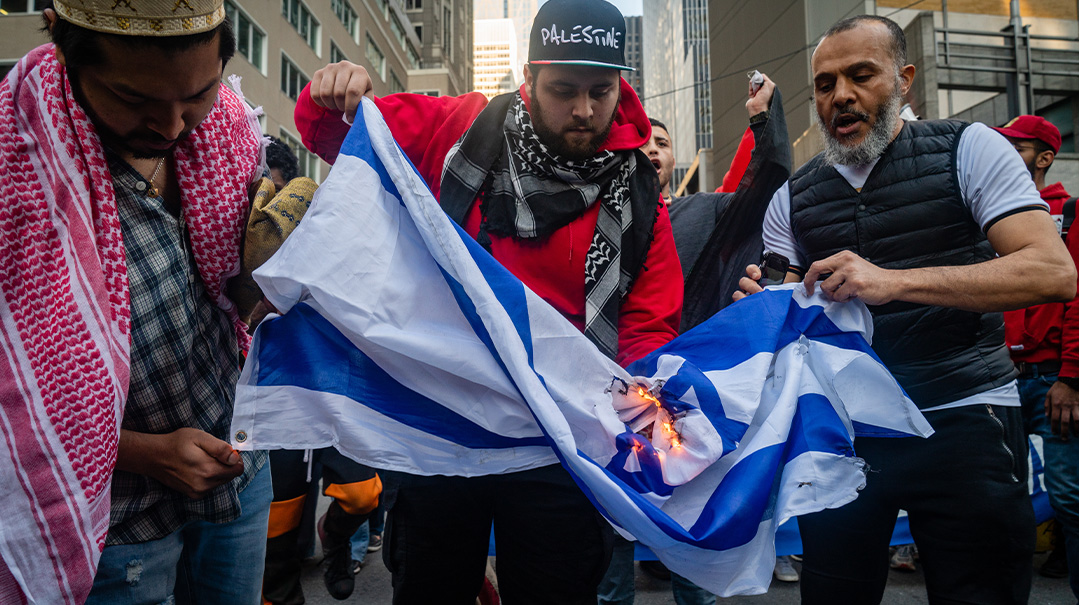Mourn What Might Have Been

If we take the Ramban’s approach to aveilus, mourning the Beis Hamikdash will be easy and uncontrived
Prepared for print by Rabbi Eran Feintuch
IS it really possible to mourn the destruction of the Beis Hamikdash? As we approach Tishah B’Av, we all ask ourselves that question. How can we weep over the loss of something we never experienced? We observe the halachos of the Three Weeks, but the inner aveilus they’re meant to express seems beyond us.
In a way, we’re 100 percent right. The aveilus we’re familiar with is mourning the passing of a loved one, Rachmana litzlan. So to us, aveilus means the pain and sorrow we associate with such an occurrence. But when we approach the Three Weeks that way, we get stuck. Try as we might, we can’t feel a deep personal loss over the absence of the Beis Hamikdash, because it’s utterly foreign to our lives.
We don’t even have a clear understanding of what the Beis Hamikdash was, so we don’t fully appreciate the magnitude of our loss. The manifest presence of the Shechinah, the korbanos that bridged Heaven and earth — these are all abstract to us. Though we understand that the Beis Hamikdash was a magnificent place, and our lives would be better if we had it, we can’t mourn what we never had to begin with.
But besides expressing personal grief, there’s another way to mourn. The Ramban asks a fundamental question about aveilus: Why must we mourn? The laws of aveilus require us to mourn even for a family member who lived to a ripe old age and we knew it was his time to go. Of course, that person’s absence pains us, but we knew he wouldn’t be around forever. His passing is painful, but not tragic. There must be a deeper reason for the mitzvah of mourning.
Says the Ramban: In truth, every death is a tragedy. Hashem wanted humanity to live forever. Hashem’s plan was for everyone to serve Him eternally. But the transgression of Adam Harishon forced Hashem, as it were, to shelve that plan and switch to Plan B. What Hashem wanted, His plan for humanity, didn’t pan out. We must mourn for Hashem’s plan that was so devastatingly derailed.
That’s the deeper reason why we grieve when someone passes away. The eternal life that person was meant to live, and the level of avodas Hashem immortality would afford, didn’t materialize. The hands that shook a lulav, the mouth that uttered words of tefillah and Torah, the feet that danced to bring joy to a groom and bride — all are lifeless, devoid of mitzvos. That’s why every person’s passing, no matter how long he lived, is a tragedy we must mourn.
This is an entirely different take on aveilus than we’re used to. We think of aveilus as feeling the pain of a personal loss. That’s why it’s nearly impossible for us to grieve over the Beis Hamikdash, which is so foreign to our reality. We can’t weep over something we never experienced. Some people admirably read books about the Beis Hamikdash and the golden days of Yerushalayim to gain a more vivid picture of what we’re lacking. But even that doesn’t really do the trick. It’s like seeing a photograph from 300 years ago, and trying to cry because that world is gone. We might wish we could visit it, but we’re not pained by its loss, because it’s not our world.
But the Ramban’s approach enables us to mourn the Churban with utmost sincerity. Aveilus isn’t just about personal tragedy — it’s about Hashem’s plan that fell through. We’re not mourning our own personal loss; we’re mourning the destruction of the world Hashem wanted. So even though we never experienced that world, we can mourn it. We grieve not because we lost something we once had, but because the world Hashem wanted, the world we were meant to have, was shattered.
Hashem wanted a world where His presence was manifest. The Beis Hamikdash was a physical place that called for avodas Hashem and the recognition of Hashem’s sovereignty. When we had the Beis Hamikdash, the whole world was fundamentally different.
That world is gone. Our world calls for many things, but definitely not avodas Hashem. It incites the worst aveiros, preaches greed, infidelity, and godlessness. Hashem’s plan didn’t endure; the world He wanted was destroyed.
We find it harder to lament a communal or national loss than an individual one. The less personal it is, the less close to home it hits. That’s because we think mourning means personal pain. But with the Ramban’s approach, the opposite is true: the more extensive the loss, the more disastrous it is that Hashem’s plan didn’t work out. No tragedy was as calamitous as the Churban, when Hashem’s plan for the entire world was incinerated in the flames that consumed the Beis Hamikdash.
The first step to mourning the Beis Hamikdash is to internalize that Hashem has a plan for the world. We know He has a plan, but we don’t think about it very much, because the world does a superb job of concealing it. The world is changing before our eyes at a dizzying pace, but we don’t see Hashem’s plan unfolding. We have to take time to reflect that Hashem is behind the wheel, steering the world toward its purpose — even if it seems to be headed in the wrong direction.
No matter how busy we are, it’s easy to find opportunities to think about Hashem’s plan for the world; we speak about it a few times a day. Many people don’t realize that the first three brachos of Shemoneh Esreh are about Hashem’s plan for the world. G-d of Avraham, of Yitzchak, of Yaakov, Who remembers the deeds of the Avos and brings a redeemer to their descendants, for the sake of His own name — even if we’re undeserving. Then, techiyas hameisim, and the final revelation of His kedushah, when all of Creation will recognize His glory. If we simply notice what we’re talking about when we daven, Hashem’s plan for the world will become much more real to us.
Once we get used to thinking about Hashem’s plan for the world, it’s easy to see how far our world is from the one Hashem wanted for us. Hashem wanted a world with Yerushalayim, a city teeming with kedushah; a world with the Beis Hamikdash, where Hashem’s sovereignty was palpable; a world that demanded and inspired avodas Hashem. And the world we live in is dismally distant from that. Because of our aveiros, Hashem’s glorious plan is in ruins. What could be a greater cause for mourning than that?
If we take the Ramban’s approach to aveilus, mourning the Beis Hamikdash will be easy and uncontrived. Take a few moments a day, especially during Shemoneh Esreh, to think about the calamity that befell Klal Yisrael, and the whole world, when the Beis Hamikdash was destroyed. Think about the magnificent world Hashem wanted for us, that our aveiros so tragically shattered.
If we do so, besides mourning the past, we’ll build up hope for a better future. Understanding the world we were meant to have will make us yearn for the final Geulah like never before. May it come speedily, in our days.
(Originally featured in Mishpacha Jr., Issue 970)
Oops! We could not locate your form.





